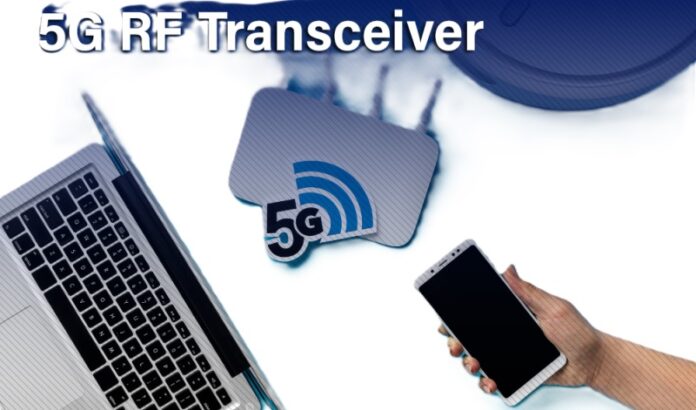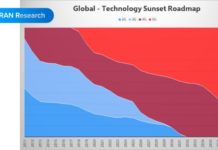
As we find ourselves in a time where being connected is no longer just a nice-to-have but an absolute requirement, advancements in wireless communication have been truly remarkable. What’s driving this groundbreaking transformation is a crucial element known as the 5G RF transceiver. As we approach a new era in communication technology, it becomes essential to understand the complexities and marvels that this device brings forth.
Extrapolate estimates that the 5G RF transceiver market could be worth a whopping $682.66 million by 2028! Let’s take a closer look at this pivotal device, unraveling its fundamental principles, exploring its applications across industries, and peering into the future of this technology.
What is a 5G RF Transceiver?
The RF (radio frequency) transceiver, a sophisticated and vital element that promotes smooth wireless communication, is at the center of the 5G revolution. The 5G RF transceiver, unlike its forerunners, is built to manage an unprecedented volume of data at rapid speeds, ushering in a new era of connection. It acts as a bridge, allowing devices to send and receive signals, and is a cornerstone for modern communication networks.
Key Components of a 5G RF Transceiver
For transmitting and receiving wireless signals in a 5G network, a complicated device called a 5G RF (Radio Frequency) transceiver is used. It is made up of a number of key components, each serving a specific purpose:
● Antennas: The Gateway to Wireless Communication
The main point of contact between the physical and digital worlds is an antenna. It is essential for efficient communication as it sends and receives signals.
● Analog Front-End (AFE): Processing Signals in Real-Time
The AFE is crucial in transforming analog signals into a digital format so that the device’s digital circuitry can process them. It guarantees that incoming signals are properly represented and prepared for further processing.
● Digital Front-End (DFE): Converting Analog to Digital
The DFE further processes the digitized signals obtained from the AFE. This part improves the signals’ quality and makes them more suitable for the decoding and interpretation of the device.
Advancements in 5G RF Transceivers
The advent of 5G RF transceivers has completely transformed wireless communication. Several significant advancements have played a crucial role in this revolution, including:
1. Beamforming and MIMO Technology
- Through transmission focusing, beamforming improves signal strength and clarity.
- MIMO increases data rates by allowing many data streams to run simultaneously.
2. Power Efficiency and Thermal Management
- Advanced techniques optimize the allocation of power for effective transmission.
- Enhanced power amplifiers use less energy, extending the life of device batteries.
3. Integration and Miniaturization
- System-on-chip (SoC) designs consolidate functions, saving space and power.
- Miniaturized transceivers enable innovative applications in wearables, IoT, and automotive tech.
These developments enable quicker, more reliable communication, opening up a world of ground-breaking applications. The 5G RF transceiver’s evolution stands as a beacon of wireless technology advancements.
Applications of 5G RF Transceivers
In order for 5G networks to have high-speed, low-latency communication capabilities, 5G RF transceivers are essential. They play a crucial role in both user devices and network infrastructure. The following are some major applications of these transceivers in some prominent sectors:
1. Telecommunications Industry
Enhanced Mobile Broadband (eMBB):
The key to giving mobile devices much better data rates and more capacity is the use of 5G RF transceivers. This results in improved mobile internet performance overall, including smoother video streaming, speedier downloads & uploads, and so on. This is mainly crucial for applications like high-definition video conferencing, augmented reality (AR), and virtual reality (VR) experiences.
Ultra-Reliable Low Latency Communication (URLLC):
5G’s Ultra-Reliable Low Latency Communication (URLLC) capability, facilitated by cutting-edge RF transceivers, is crucial for applications that necessitate instant communication with minimal delay. This is particularly important in situations such as autonomous vehicles, where time-sensitive decisions are essential for ensuring safety, or in industrial automation environments where seamless control of machinery in real-time is imperative.
Massive Machine Type Communication (mMTC):
mMTC essentially involves linking a huge number of IoT devices. 5G networks use RF transceivers to handle communication with many low-power, low-data-rate devices. This is crucial for various applications like smart agriculture with lots of sensors and smart cities with countless connected devices for urban management.
2. Automotive and IoT
V2X Communication:
5G RF transceivers play a crucial role in Vehicle-to-Everything (V2X) communication. This includes Vehicle-to-Vehicle (V2V), Vehicle-to-Infrastructure (V2I), and other forms like Vehicle-to-Pedestrian (V2P) communication. This technology improves transportation safety and efficiency, facilitating traffic management, collision avoidance, and autonomous driving.
IoT Connectivity in Smart Cities:
These transceivers are instrumental in laying the groundwork for IoT connectivity in smart cities. They enable smooth communication among different devices and systems, making it possible to implement applications such as intelligent traffic management, environmental monitoring, and public safety. This, in turn, enhances urban planning and resource usage.
3. Healthcare and Industry 4.0
Remote Surgery and Telemedicine:
5G RF transceivers facilitate fast, low-delay connections vital for remote surgery and telemedicine. Surgeons can operate with accuracy in real-time from a distance, enabling patients in underserved areas to access expert medical care via teleconsultations.
Smart Factories and Industrial Automation:
5G transceivers are important in Industry 4.0 for establishing fast and reliable connections between machines in smart factories. This enables automation, predictive maintenance, resource management, and technologies like remote troubleshooting with augmented reality.
Future Trends of 5G RF Transceivers
With various new trends at the forefront of this transition, the market for 5G RF transceivers is poised to experience major shifts as technology develops. Some of them include:
1. AI-Enhanced Signal Processing
AI in signal processing is a key trend in the future of 5G transceivers. With advanced AI and machine learning, transceivers can adapt to network changes, improve signal quality, manage interference, and use resources efficiently. Moreover, AI-driven beamforming techniques can enhance the reliability and performance of 5G networks, especially in scenarios with high user density or challenging environments.
2. Quantum Communication and Security
Integration in Quantum Communication and Security is another compelling frontier in the development of 5G RF transceivers. Quantum tech provides high-level security through quantum key distribution (QKD) and cryptography, which use quantum particles to safeguard data on 5G networks. Quantum-safe algorithms in these transceivers can greatly enhance data security against cyber threats.
3. Energy Efficiency and Sustainability
In the future, the power of 5G RF transceivers will be leveraged to improve energy efficiency to fulfill sustainability goals. Power consumption, especially in battery-operated devices, is critical. With advancements in materials, circuit designs, and power management techniques, transceivers will become more energy-efficient without compromising performance. This reflects the industry’s inclination toward greener technologies.
Final Thoughts
The 5G RF transceiver is the unsung hero behind the amazing capabilities of 5G networks. It supports various advanced applications like high-definition video streaming, remote surgery, autonomous vehicles, smart cities, improved IoT connectivity, and immersive augmented reality experiences. The future of these transceivers holds exciting developments and trends. These advancements will push the limits of wireless communication and create new opportunities in various industries.
Bio: A budding writer and a bibliophile by nature, Alisha has been honing her skills in market research and the B2B domain for a while now. She writes on topics that deal with innovation, technology, or even the latest insights into the market. She is passionate about what she pens down and strives for perfection. An MBA holder in marketing, she has the tenacity to deal with any given topic with much enthusiasm and zeal. When switching off from her work mode, she loves to read or sketch. You can find her here: https://www.linkedin.com/in/alisha-patil-6332a61a5/


















